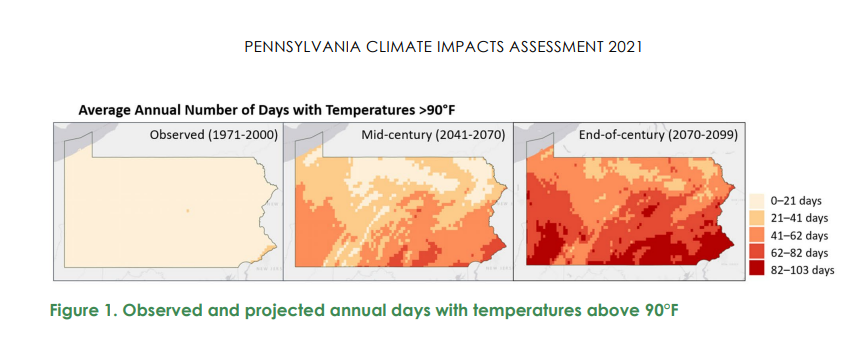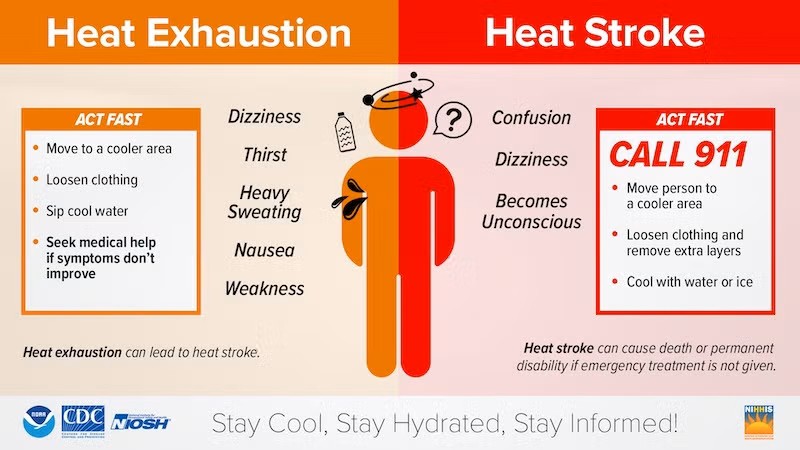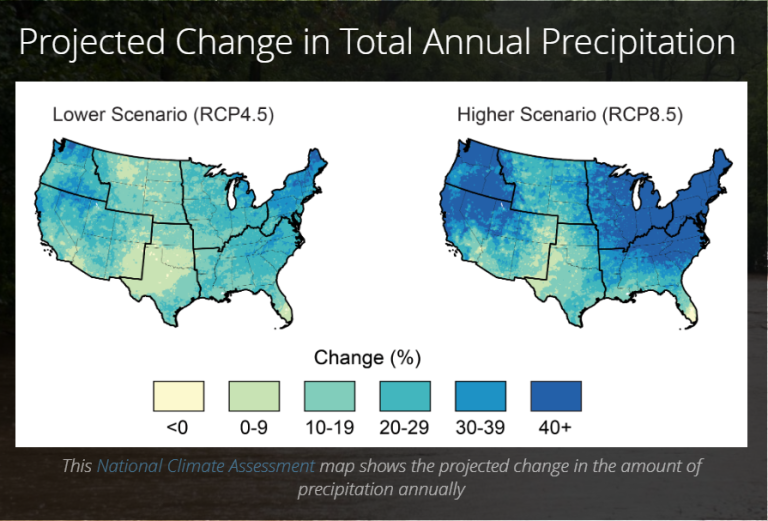Climate Change in Pennsylvania
As climate change continues, Pennsylvania’s climate is getting both hotter and wetter. In the last century, temperatures in Pennsylvania rose by 1.5 degrees Fahrenheit, with average temperatures expected to increase by up to another 9.3 degrees Fahrenheit by the year 2100 (in business as usual projections).
Pennsylvania is also getting wetter. Between 2000 and 2020, Pennsylvania experienced an annual precipitation increase of ~4.6 inches (compared to 1971–2000). The amount of rainfall during “extremely heavy” precipitation events (which occur <1% of the time) are also projected to rise 13% by 2050 and 20% by 2100. With an increase of both the amount of rain and storm intensity, floods and landslides are also expected to rise. Learn from Climate Change in PA and the 2021 Pennsylvania Climate Impacts Assessment (which includes a complete risk assessment for the state under various climate change scenarios).
Heat & Heatwaves

As summer temperatures rise across Pennsylvania, Pitt’s construction safety managers track heat-related injuries and send out extreme heat alerts and safety practices to the University community. OSHA does not currently have a heat or cold stress standard, but NIOSH and other agencies have guidance documents.
- To prevent heat-related injuries, limit hours spent working outside during the hottest time of the day.
- Wear light colored, loose, breathable clothing.
- Stay hydrated by drinking a cup of water every 15 to 20 minutes, even if you aren’t thirsty; avoid drinks with high caffeine or sugar.
- If you will be doing strenuous work outside for a prolonged period of time, drinking a beverage with electrolytes can help prevent heat exhaustion.
- Make sure to schedule frequent rest breaks and encourage colleagues to monitor each other for signs of heat illness which include dizziness, nausea, weakness, and fainting.
- When in doubt, call Pitt Police (412-624-2121) or 911.
- Learn more about working safely in heat and find out if there are heat alerts in our regions from NIHHIS.

Heavy Rainfall, Flooding, & Landslides
If heavy rainfall events cause flooding, find safe shelter right away. Don’t walk, swim, or drive through flood waters. Just 6 inches of moving water can knock you down and 1 foot of moving water can sweep a vehicle away. Avoid crossing bridges over fast-moving flood waters.

Heavy rains can also trigger landslides quickly; stay alert so you can evacuate if needed. Always follow instructions from local emergency managers. Never cross a road or walkway with mud flowing over it and avoid river valleys or low-lying areas during times of danger. If you think someone is trapped or injured by a landslide, do not enter the area; call 911 and direct rescuers to the location. Learn more about landslide safety.
Tornadoes
Climate change is likely tied to recent changes in tornado behavior across the U.S. “Tornado alley” is shifting east away from the Central Plains — and tornadoes are becoming increasingly powerful compared to historical data. According to the National Centers for Environmental Information, the number of tornadoes has been increasing, with 1,119 tornadoes in 2024.
NWS StormReady
The University’s Pittsburgh campus has been a National Weather Service (NWS) StormReady institution since 2015 — one of 326 universities and colleges nationwide who have achieved this designation. All 5 Pitt campuses have maintained this certification since 2017. University leaders continue to use NWS training and resources to modify and implement the University’s severe weather response plans.
Pitt’s Emergency Management office also uses comprehensive NWS forecast reports to prepare for significant weather events — or on days when there are large campus events. Key Pitt decision-makers also receive detailed WeatherWorks statements, which give an overview of conditions, the threat level for various hazards, and pavement risk assessment. Pitt Public Safety, Emergency Management, and Facilities Management work together to utilize WeatherWorks reports to inform the University’s operations.
